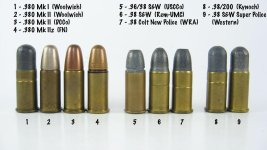As DWalt said, the Mk IIz that was adopted in the 1930s had a 178gr jacketed bullet.
The argument with the Germans actually predates the Nazis and goes back to the days of the "dum-dum" bullets, which the British were generally considerate enough to use only against natives without lawyers, but the fussy Germans argued about them anyways when the Hague Conventions were adopted. It's actually not clear whether lead bullets as such were outlawed, only bullets designed to deform, but some overly worry-inclined military bureaucrats in Britain decided "better safe than sorry" when Germany looked like the opponent in the next likely war. One did not want to risk exposing POW's to war crimes accusations by the enemy.




